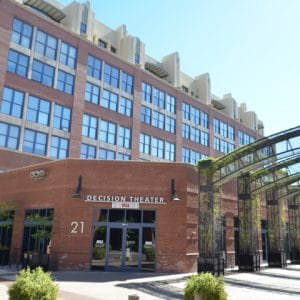NOAA Marine Debris Program
Center for Biodiversity Outcomes
NOAA Marine Debris Program
ASU Center for Biodiversity Outcomes Associate Director of Biodiversity Valuation and Assessments Beth Polidoro, recently lead a Microplastic’s Risk Assessment with students in the National Oceanic and Atmospheric Administration’s Marine
Researchers help mitigate marine plastic pollution
ASU Center for Biodiversity Outcome Founding Director Leah Gerber and Life Sciences PhD student Miranda Bernard were participants in the National Socio-Environmental Synthesis Center, or SESYNC, through the Plastic Pollution
Group effort to preserve nature in Buckeye
The White Tank Mountain Conservancy and ASU teamed up to identify how the city of Buckeye can grow without blocking wildlife’s natural corridors. ASU Center for Biodiversity Outcomes researcher and
Private sector, climate change impacts
ASU-Conservation International Professor of Practice David Hole, recently co-authored a paper in Nature called, “The private sector’s climate change risk and adaptation blind spots.” Abstract: The private sector is already
Natural Capital Protocol for the Ocean Workshop
On Friday, December 7, 2018, from 8:30 a.m. to 4:30 p.m. EST in Washington, D.C., the ASU Center for Biodiversity Outcomes will join other organizations in discussing how businesses depend
Reflections on the NatureNet Science Fellowship
By Kelly Gravuer As I boarded the plane to Washington, D.C. to take on new science policy challenges, my thoughts drifted to the NatureNet Science Fellowship I had just wrapped

CI partners with ASU Decision Theater on innovative tool
As part of the ASU-Conservation International partnership, CI recently collaborated with ASU Design Theater to implement a tool that assists decision makers in policy interventions associated with land degradation.
Rethinking solutions to seafood fraud
ASU Center for Biodiversity Outcomes Associate Director for Conservation Evidence Samantha Cheng coauthored a paper titled “Rethinking solutions to seafood fraud” published in Frontiers in Ecology and the Environment –
Making the most of conservation money
With limited funding, it's a challenge to bring back threatened or endangered species. A new decision-making tool developed by Leah Gerber, director of the Center for Biodiversity Outcomes, helps conservation scientists decide how to conserve the greatest number of species.
Making the most of conservation money
ASU Now One of the balancing acts faced by conservation agencies is how to conserve and protect as many species as possible from extinction with limited funding and finite resources.
Efficient resource allocations for species protection
ASU Center for Biodiversity Outcomes Founding Director Leah Gerber co-authored a paper published today by Science magazine titled “Endangered species recovery: A resource allocation problem” [PDF]. The article highlights a new decision-tool recently
CAP LTER urban ecology work highlighted by Arizona PBS
The Central Arizona–Phoenix Long-Term Ecological Research program, a unit of the Julie Ann Wrigley Global Institute of Sustainability at Arizona State University, was recently featured in an episode of “Catalyst”